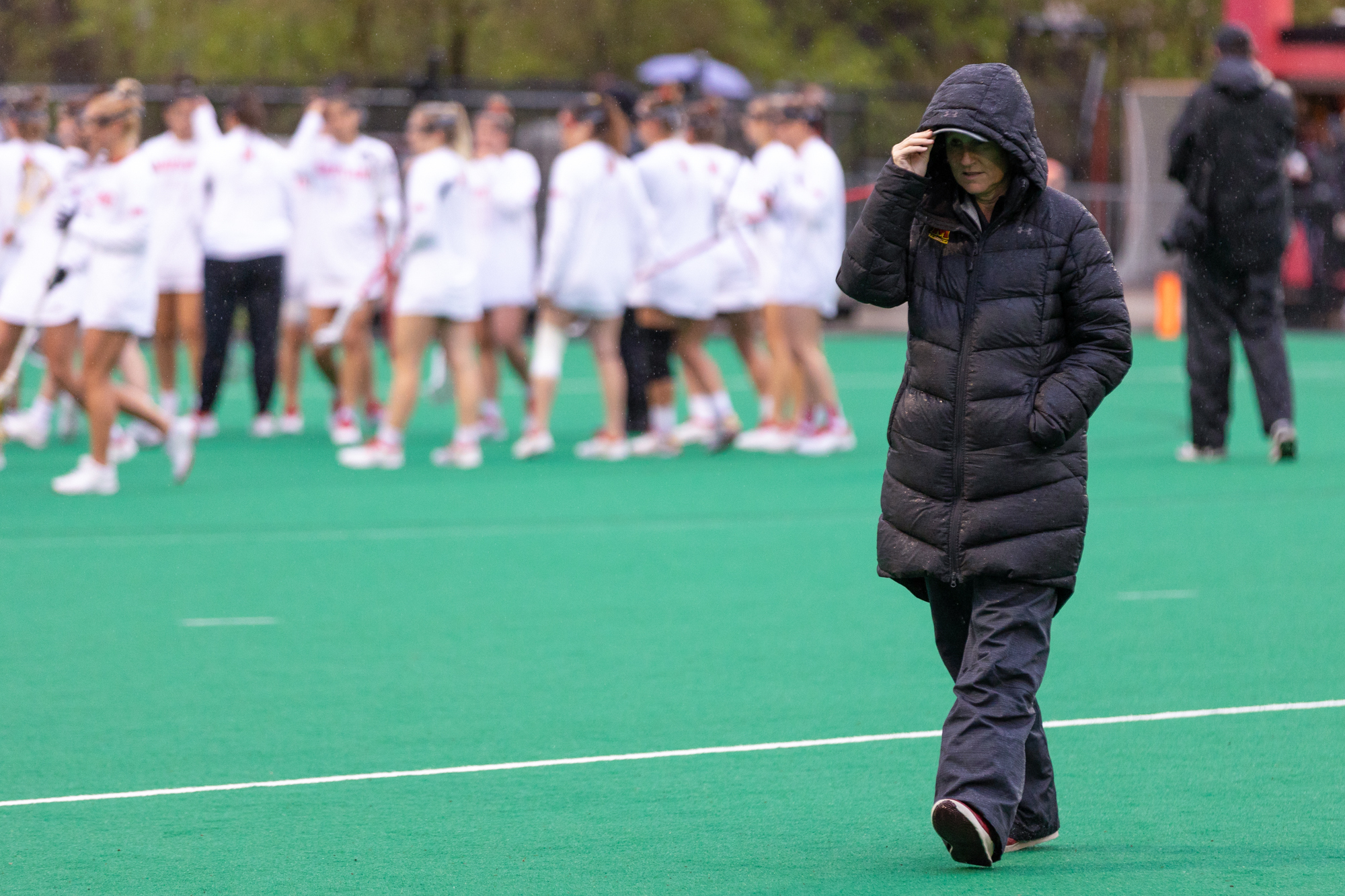After then-No. 10 Maryland women’s lacrosse won its third conference game in seven days last Saturday against Ohio State — a game coach Cathy Reese called the most complete outing she saw from her team this season — the Terps were seemingly heating up at the right time entering last week with just two regular season games left on their schedule.
But their next performance against now-No. 14 Penn State Thursday bore no resemblance to the dominant win over the Buckeyes.
Maryland fell to Penn State 12-7, tying a season-low for goals and registering a shooting percentage of 28 percent, its second-worst of the season. The Terps fell to No. 12 in Monday’s poll after the defeat.
Reese has previously pointed to subpar finishing as the cause for many of the Terps’ offensive struggles. But against the Nittany Lions, Maryland failed to find solid scoring chances due to a passive attack throughout.
[No. 10 Maryland women’s lacrosse’s nine-game win streak snapped by No. 18 Penn State, 12-7]
“We weren’t really attacking the cage very hard,” Reese said. “When we came out after halftime, we were trying to kind of make some changes and attack their zone differently, and we just didn’t do it.”
It took nearly four minutes for Maryland to fire its first shot attempt and nearly seven minutes before it scored its first goal. Each team would score just once more in the period, and the Terps exited with a 2-1 lead.
All three of those points came off free position shots. The teams combined for ten goals in those scenarios, over half of the game’s total scores. The difference between the two squads ended up being their ability to score when not on the eight-meter line — both teams had 17 shots excluding their free position opportunities. Penn State converted on seven of those while Maryland did so just twice.
“[It was] the lack of urgency and too many uncharacteristic turnovers which kind of put us in a tough situation tonight,” Reese said.
[Maryland women’s lacrosse is bolstered by its dynamic draw control unit]
Penn State crowded the inside, forcing the Terps to either attack the cage with physicality or be willing to fire deep and low-percentage shots. Reese’s team looked tentative whenever it tried either. Maryland repeatedly found itself with the ball in its stick and a dwindling shot clock. That forced the Terps into multiple possessions that ended in desperate attempts or even shot clock violations.
“We didn’t move the ball fast enough, we were attacking slower, our feet were slower,” Reese said. “[We lacked] that sense of urgency where we’re attacking hard one-on-one, we’re having our head up and we’re ready to move the ball quickly.”
Reese and the Terps get a week to rest and refocus. But then looms No. 2 Northwestern, the top scoring team in the nation. To keep up with the Wildcats’ explosive offense, Maryland will need to make adjustments and find the fervor it lacked against Penn State.
“We didn’t have that level of intensity which we need to have,” Reese said. “We have a week to make some adjustments and make some changes and get ourselves in the right place.”



